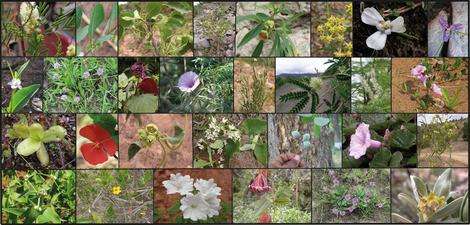Hunting species: Not just a numbers game

In the race to describe all of Earth's species before they go extinct it has been suggested that one species that is thriving is taxonomists.
Taxonomists are the people responsible for describing, identifying, and naming species – so far they have described around two million species. This could involve trekking into the jungle to discover new plants and animals but more often means poring over samples in existing collections and databases to unearth previously undescribed species.
'Taxonomic data, knowledge about species, underpins nearly every aspect of environmental biology including conservation, extinction, and the world's biodiversity hotspots,' explains Robert Scotland of Oxford University's Department of Plant Sciences.
If you want to describe all Earth's species before they vanish then the question of the taxonomy community's capacity, and the speed with which they can discover new species, becomes very important.
Some recent studies looking at trends in extinction counted the number of authors on each taxonomic paper and concluded that there was an expanding workforce of taxonomists chasing an ever diminishing pool of undescribed species. 'These findings contradict the prevailing view that there are six million species on Earth remaining to be discovered by an ever diminishing number of taxonomists, the so called 'taxonomic impediment',' Robert comments.
To test whether taxonomists were really a booming or endangered species, and what this might mean for species discovery, Robert and colleagues from Exeter University and Kew Gardens analysed data on the discovery of new plant species. A report of the research is published in the journal New Phytologist.
'What we found was that from 1970 to 2011 taxonomic botanists described on average 1850 new flowering plants each year, identifying a total of 78,000 new species,' Robert tells me. 'But while this period saw the number of authors describing new species increased threefold, there was no evidence for an increase in the rate of discovery.
'One recent idea is that species are becoming more difficult to discover and more authors are subsequently required to put in more effort to describe the same number of new species. We found no evidence for this as the lag period between a specimen being collected and subsequently described as a new species has increased.'
The team's study showed that, far from running out of new species, there are still around 70,000 new species of flowering plant waiting to be discovered. So why are taxonomy authors multiplying?
To get some context the researchers analysed the number of authors on papers in other subjects including botany, geology and astronomy over a similar period, 1970-2013, and then compared them to the data on taxonomy authors.
Discover the latest in science, tech, and space with over 100,000 subscribers who rely on Phys.org for daily insights. Sign up for our free newsletter and get updates on breakthroughs, innovations, and research that matter—daily or weekly.
'We found that the increase in authors on taxonomy papers was in fact fairly modest compared to the 'author inflation' in other subjects including botany,' Robert explains. 'Our data show for geology that there were 1.8 authors per paper in 1975 but this has risen to 4.8 in 2013, and for astronomy, 1.6 authors per paper in 1970, 8.4 in 2013, so a fivefold increase.'
There could be many different reasons for author inflation; more interdisciplinary research, technological advances, the closer monitoring of performance indicators in scientific institutions that has led to the inclusion of students, lab assistants, junior staff and technical staff as authors on papers.
Robert comments: 'Using crude measures of author numbers to measure taxonomic capacity at a time of author inflation across all of science has the potential to be highly misleading for future planners and policy makers in this area of science.
'Our study found that in fact a very large number of new species are discovered and described by a very small number of prolific botanists, and more than 50% of all authors are only ever associated with naming a single species.
'It shows that there remain huge uncertainties surrounding our capacity to describe the world's species before they go extinct.'
More information: onlinelibrary.wiley.com/doi/10 … 1/nph.12522/abstract
Journal information: New Phytologist
Provided by Oxford University



















